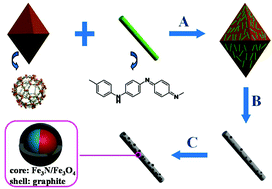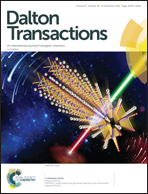Metal–organic frameworks-derived core–shell Fe3O4/Fe3N@graphite carbon nanocomposites as excellent non-precious metal electrocatalyst for oxygen reduction†
Abstract
Metal–organic frameworks (MOFs), as precursors for synthesizing new carbon materials, hold promise for applications in the oxygen reduction reaction (ORR) as efficient non-precious metal catalysts. Here, a facile template-assisted strategy was adopted to fabricate a core–shell structure derived from MIL-101(Fe) and polyaniline. MIL-101(Fe) nanoparticles obtained by microwave-assisted synthesis were combined with PAni in different ratios and carbonized at 900 °C under flowing N2. An optimized core–shell Fe3O4/Fe3N@graphite carbon structure was successfully prepared and exhibited attractive ORR activity, with a half-wave potential of 0.916 V vs. RHE and an electron transfer number of 4.0 at 0.4 V vs. RHE. Furthermore, the catalyst displayed excellent stability in an alkaline solution. The superior ORR performance of the catalyst is mainly attributed to its stable core–shell structure, large specific surface area and high content of electrocatalytically active N species.



 Please wait while we load your content...
Please wait while we load your content...